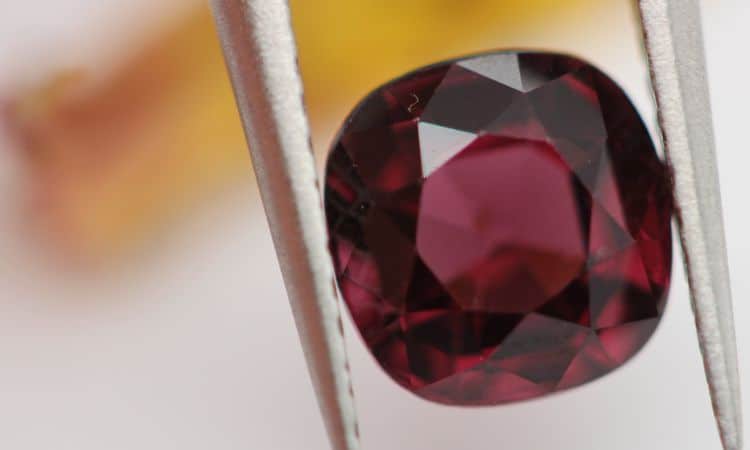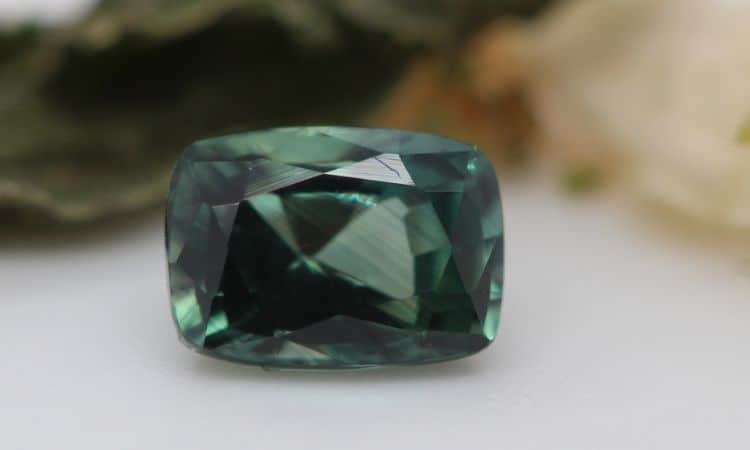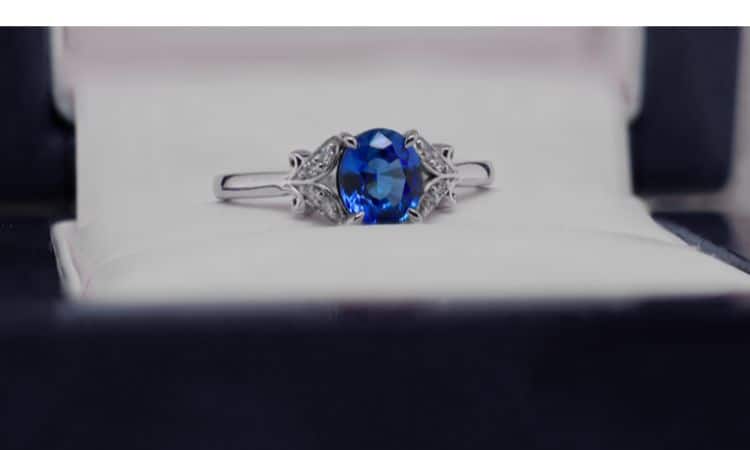Analysis of Round Cut Gemstones
In the world of gemstones, the cut plays a pivotal role in determining a gem's allure, value, and visual appeal. The cut essentially dictates how a gem is shaped and faceted, distinguishing it from the gemstone's inherent shape. In this comprehensive report, we delve into the realm of round cut gemstones. We explore their defining characteristics, delve into the origins of the round cut, investigate why round cut diamonds are hailed as the best, examine the factors behind the premium pricing of brilliant round cut diamonds, and assess the popularity of round cuts in non-diamond gemstones, with a particular focus on why they are not as favoured in the coloured gemstone market.
Gemstone Cuts vs Shapes
Before we delve deeper into round cut gemstones, it's essential to grasp the distinction between gemstone cuts and shapes. The cut of a gemstone refers to how it is intricately faceted and angled, significantly impacting its brilliance and fire. Notably, popular gemstone cuts encompass round, princess, emerald, cushion, marquise, and more, each presenting a unique facet arrangement and optical effect.
Conversely, the gemstone shape pertains to its outline when viewed from above, independent of its faceting. This includes round, oval, pear, heart, rectangular, and various other shapes. While shape does not directly influence a gem's brilliance, it holds personal and stylistic significance, allowing for tailored jewellery design preferences.
Difference between Round Cut and Brilliant Cut - Are they both the same?
The terms "round cut" and "brilliant cut" are related but not the same. Let's clarify the difference between these terms:
-
Round Cut: A "round cut" specifically refers to the shape or outline of a gemstone when viewed from above. It is round or nearly round, with a circular silhouette. The round cut focuses on the gemstone's shape rather than its facet arrangement. Round-cut gemstones come circular, and this shape can be applied to various gemstone types, including diamonds and coloured gemstones.
-
Brilliant Cut: "Brilliant cut" is a term that describes a specific facet arrangement and cutting style applied to a gemstone, often to enhance its optical properties, including its brilliance and sparkle. The brilliant cut is characterized by numerous facets arranged in a way that maximizes the reflection and dispersion of light within the gemstone, creating a dazzling play of light. While round diamonds are frequently cut in brilliant style, other gemstone shapes can also be cut with brilliant facets.
So a "round cut" refers to the circular shape of a gemstone, while a "brilliant cut" refers to a specific facet arrangement designed to enhance a gemstone's brilliance. Round diamonds are commonly cut in a brilliant style, but brilliant cuts can be applied to various gemstone shapes, not just round ones. Therefore, while they are related, they are not the same, and a brilliant cut can be found in various shapes beyond round.
What Defines a Round Cut Gemstone?
A round cut gemstone is self-explanatory – it is characterized by a circular shape when viewed from above. The essential feature of a round cut gemstone is its round or nearly round outline, precision faceting, and meticulous arrangement of facets designed to maximize brilliance and sparkle. The round cut boasts a standardized facet count, typically comprising 57 or 58 facets, all meticulously cut and polished to precise angles and proportions to attain optimal optical performance.
This cut is celebrated for its balanced, symmetrical appearance, making it a popular choice for a wide array of gemstones, particularly diamonds. Its exacting angles and proportions are strategically designed to maximize light reflection, creating a captivating display of brilliance. It is these precise facets that are integral to the round cut's widespread popularity.
Origins of Round Cut
The origins of the round cut can be traced back to the 17th century when diamond cutting techniques began to evolve. However, it was in 1919 that Marcel Tolkowsky, a brilliant diamond cutter, published a groundbreaking mathematical formula that established the ideal proportions and facet arrangement for a round cut diamond, now known as the "Ideal Cut." This formula revolutionized diamond cutting practices, firmly establishing the round cut as the most popular and sought-after diamond shape.
Tolkowsky's work laid the foundation for what we now recognize as the brilliant round cut. His formula prescribed 57 or 58 facets and specific angles, ensuring that light entering the stone would reflect internally, creating a dazzling display of brilliance. Since then, the round cut has become the gold standard for diamond cutting, setting the benchmark for achieving maximum fire and brilliance in a gemstone.
Why Round Cut Diamonds Are Considered the Best
Round cut diamonds have earned their reputation as the finest in the gemstone world for several compelling reasons:
-
Optimal Brilliance: The round cut's meticulous facet arrangement and proportions are optimized to reflect a maximal amount of light, resulting in extraordinary brilliance. Its symmetrical shape minimizes light leakage and maximizes sparkle.
-
Versatility: The round cut is incredibly versatile, harmonizing with a wide range of jewellery settings and designs. Its classic and timeless aesthetic makes it suitable for engagement rings, pendants, earrings, and more.
-
Standardization: The standardized facet count for round cut diamonds simplifies the evaluation and comparison of cut quality, providing buyers with confidence in their selection.
-
Investment Value: Round cut diamonds tend to hold their value over time due to their enduring popularity and consistent demand, making them a trustworthy choice for both personal adornment and investment purposes.
Why Brilliant Round Cut Diamonds Are the Most Expensive Per Carat
Brilliant round cut diamonds command a premium price per carat, driven by a combination of exceptional qualities and high demand. Various factors contribute to their premium pricing:
-
Labour-intensive Cutting: Crafting a brilliant round cut diamond involves intricate cutting and precise faceting, demanding skilled labour and expertise, which adds to the overall cost.
-
Material Loss: The cutting process results in significant material loss, with the removal of substantial carat weight to achieve the ideal facets and angles. This reduces the overall yield from the rough diamond.
-
High Demand: Global demand for round cut diamonds is considerable, fostering a competitive market. The synergy of high demand and limited supply for well-cut stones propels prices upward.
-
Exceptional Optical Properties: Brilliant round cut diamonds are prized for their capacity to maximize light dispersion, creating a scintillating display of fire and brilliance, a feature that justifies their premium pricing.
-
Brand Recognition: The round cut has cultivated a reputation for excellence and timelessness, further contributing to its premium pricing. Numerous esteemed jewellers and brands predominantly feature round cut diamonds, amplifying their allure.
Popularity (or the lack thereof) of Round Cuts in Non-Diamond Gemstones
While round cut diamonds enjoy unparalleled popularity in the jewellery industry. The same, however, cannot be said for coloured gemstones, including sapphires, rubies, and others. The choice of round cut for coloured gemstones differs due to specific factors:
-
Colour Maximization: In coloured gemstones, the primary objective is to enhance and accentuate the stone's inherent colour, in contrast to the white brilliance of diamonds. The precise facet arrangement of the round cut can optimize the dispersion of a gemstone's innate colour, making it a favourable choice for coloured gemstones.
-
Versatility: The round cut's versatility allows it to complement the unique characteristics of various coloured gemstones. It strikes a balance between brilliance and colour, making it a versatile choice for a wide array of jewellery designs.
-
Classic Appeal: Just as in diamonds, the round cut's timeless appearance appeals to customers seeking traditional and elegant jewellery designs featuring coloured gemstones.
-
Market Demand: The round cut has gained popularity in coloured gemstones due to customer preference for a shape that echoes the qualities of round cut diamonds. As a result, jewellers often offer a range of gemstone options in this shape.
-
Accessibility: In the world of coloured gemstones, the round cut is more accessible, as the strict proportion and facet requirements associated with diamonds are not as stringent. This flexibility in cutting and pricing allows for a broader spectrum of choices.








Comments (0)
Write your review